Conflict Zones
About 600 North Korean soldiers killed in war in Ukraine, lawmakers say | Russia-Ukraine war News
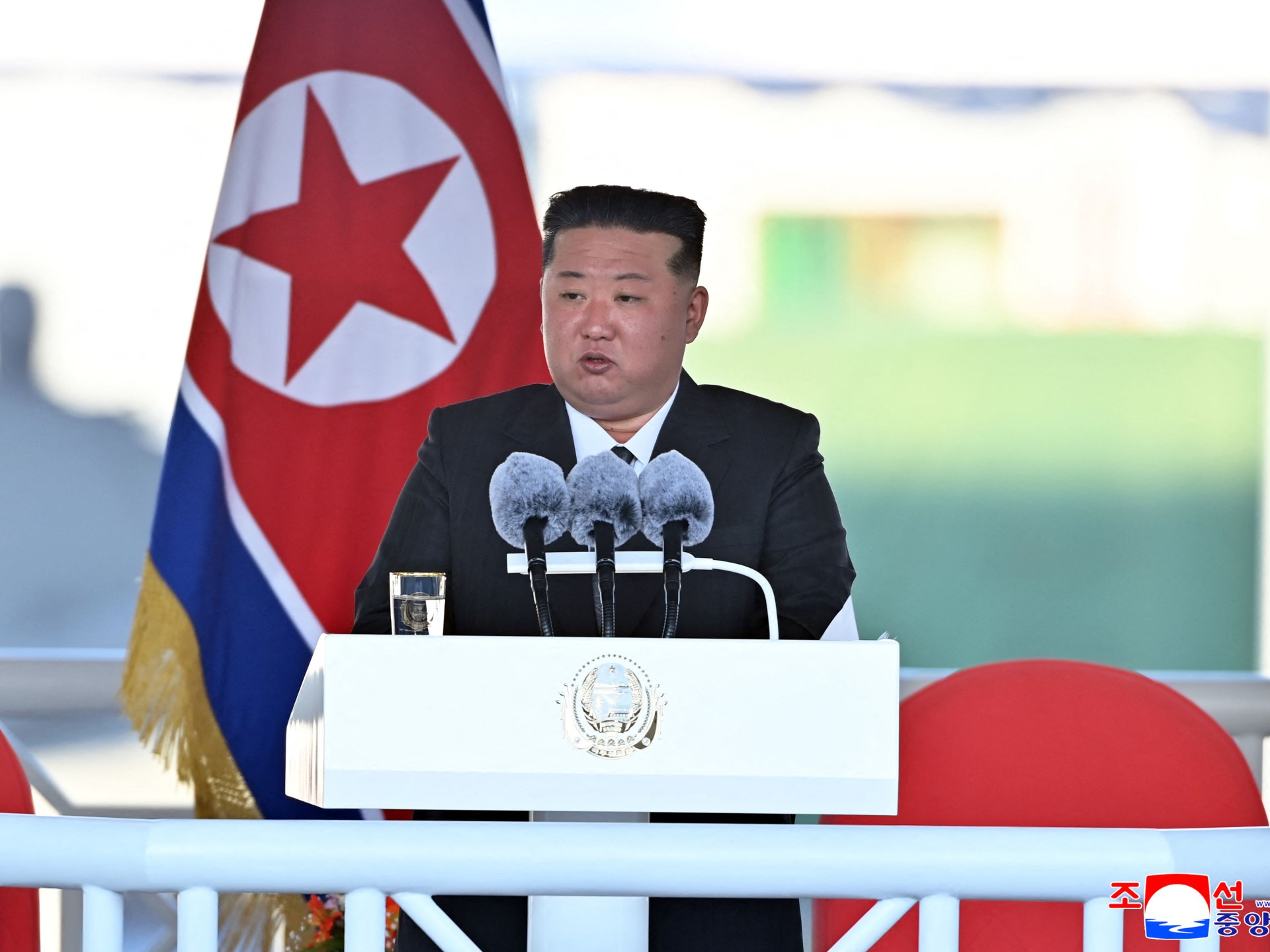
South Korean lawmakers provide update on estimated casualties following briefing by country’s intelligence agency.
About 600 North Korean soldiers have been killed fighting in Russia’s war in Ukraine, South Korean lawmakers have said, citing intelligence officials.
Speaking after a closed-door briefing by the National Intelligence Service (NIS) on Wednesday, Lee Seong-kweun and Kim Byung-kee told reporters that an estimated 4,700 North Koreans had been killed or injured so far in the war.
Lee and Kim, who co-chair the legislature’s intelligence committee, made their comments two days after Pyongyang confirmed for the first time that it had sent troops to Russia to support Moscow’s war.
In a report by the official Korean Central News Agency (KCNA) on Monday, North Korean leader Kim Jong Un was quoted as saying he had ordered the deployment of troops to “annihilate and wipe out the Ukrainian neo-Nazi occupiers and liberate the Kursk area in cooperation with the Russian armed forces”.
The latest casualty figures mark a significant jump from the NIS’s briefing to lawmakers in January, when the spy agency reportedly said that about 300 North Korean troops had been killed in the conflict.
In their briefing to reporters, Lee and Kim, members of the conservative People Power Party and liberal Democratic Party, respectively, said that the NIS estimates that Pyongyang has deployed about 15,000 soldiers in total.
The lawmakers also said that Pyongyang appears to have received technical assistance on spy satellites in return for its assistance, as well as drones, electronic warfare equipment and SA-22 surface-to-air missiles.
“After six months of participation in the war, the North Korean military has become less inept, and its combat capability has significantly improved as it becomes accustomed to using new weapons such as drones,” Lee told reporters.
Conflict Zones
‘Exiled’: India-Pakistan families split as border shuts over Kashmir attack | India-Pakistan Partition

Attari-Wagah border crossing, India — It was time to say goodbye. Standing under the searing sun, Saira, wearing a black net burqa, tightly held her husband Farhan’s hand, trying to stay together for a few more moments at the main border checkpoint between India and Pakistan.
Named after Attari village on the Indian side and Wagah across the border, this crossing has for years served as one of the few gateways for people to travel between the neighbours. But the Attari-Wagah border is now the latest place where India and Pakistan divide their citizens, including thousands of families with some members who are Indian, and others Pakistani.
Saira and Farhan had travelled overnight from New Delhi, with their nine-month-old boy Azlan tucked in his mother’s lap after India ordered almost all Pakistani citizens to leave the country by Tuesday, following a deadly attack in Pahalgam in Indian-administered Kashmir that Prime Minister Narendra Modi’s government has blamed on Pakistan. Islamabad has denied the allegation.
Like thousands of other couples, Saira, from Karachi, fell in love with New Delhi’s Farhan on Facebook three years ago. They were married, and Saira moved to New Delhi.
But as Saira and Farhan looked at each other on Tuesday, their eyes moist, a border guard rushed them to get on with it. At the checkpoint guarded by barbed wire and barricades, their only identity is the one defined by the colours of their passports: Saira’s green and Farhan’s blue.
“We shall meet soon,” Farhan told Saira, as he kissed his infant son’s cheeks, preparing for Saira and Azlan to step across the border. “Insha Allah, very soon. I will pray for you both.”
But then a guard stepped forward, pointing to Azlan’s passport. It was blue. “Not the baby, madam,” he told Saira, as she held her son in her left arm.
Before they could fully comprehend what was happening, the couple had been separated: Saira, on her way back to Karachi; Farhan and their breastfeeding child, Azlan, to New Delhi.
![The Attari-Wagah border crossing, seen from the Indian side, on April 29, 2025 [Yashraj Sharma/Al Jazeera]](https://www.aljazeera.com/wp-content/uploads/2025/04/Checkpost-1746001588.jpg?w=770&resize=770%2C578&quality=80)
‘An exile state of life’
On April 22, armed men shot 26 civilians dead, mostly tourists, in the resort town of Pahalgam. Since then, the countries have been on edge. India has blamed Pakistan for the attack; Islamabad has rejected the charge and has called for a “neutral investigation”.
The nuclear-armed neighbours have exchanged gunfire for six days in a row along their disputed borders. India has suspended its participation in the Indus Waters Treaty (IWT), a key water-sharing pact. Pakistan has threatened to walk out of other bilateral agreements. Both nations have trimmed diplomatic missions and, in effect, expelled most of each other’s citizens. The Attari-Wagah border now stands closed for movement or trade.
So far, an estimated 750 Pakistani passport holders have crossed back across the border since April 22, while about 1,000 Indians have returned from the other side. Those affected include a Pakistani woman who was visiting her mother’s home after two decades, two sisters who came for a wedding in India next week but have had to go back without attending the event, and elderly Pakistani patients with deadly ailments they had hoped to have treated in India.
There was also 48-year-old Haleema Begum, who travelled for two days from Odisha on the eastern coast, covering more than 2,000km (about 1,250 miles), to reach the border crossing.
Haleema left her home in Karachi 25 years ago, when she married a small businessman in Odisha. Life, she said, had mostly been fine before a policeman delivered the Indian government’s “Leave India” notice.
“I was so scared. I told them that I did not just come here, I was married off in India,” she said, sitting in a taxi near the border, her cab loaded with dozens of bags. “Is it fair of the [Indian] government to uproot my life and push me out?” Haleema lamented. After spending a quarter of a century in India, she said, the country is her home as well.
Haleema was accompanied by her two sons, 22-year-old Musaib Ahmed and 16-year-old Zubair Ahmed. Her husband passed away eight years ago. The children decided that Zubair would cross over with their mother to take care of her.
But both the children have blue passports, unlike their mother’s green one. They pleaded, then argued, with the border guards. Nothing worked. “She has never travelled alone, I do not know how she will do this,” Musaib said, referring to Haleema’s upcoming 1,200km journey to Karachi.
Once she gets to Karachi, Haleema does not have a home to go to.
“My parents died long ago,” she said, adding that her only brother lives with his family of six in two rooms. “There are 1,000 questions in my mind,” she added, wiping her tears. “And no answers. I just pray to God for the safety of children. We will reunite soon.”
Suchitra Vijayan, the author of Midnight’s Borders, a 2022 book that follows people divided by overnight borders, said the Indian subcontinent “is marked by many, many, of these very heartbreaking stories”.
Since the partition of British India, Vijayan noted, Muslim women from India or Pakistan who married men from the other country and moved there have been among the most affected. The dilemma is perpetual, she said, especially when they are forced to return. “You’re caught in a place that is no longer your home — or it’s a home that you don’t recognise. And exile becomes your state of life.”
Over the decades, many of the families divided by India-Pakistan tensions have held on to hopes — much like Saira and Farhan — that they will be able to reunite soon, she said. Often, that is not how it actually plays out for them.
“One of the most painful things you will listen to repeatedly is that a lot of people thought that they were just leaving temporarily,” she said.

‘Only a mother knows the pain’
Back at the Attari-Wagah border, Farhan pretended his son’s feeding bottle was a plane, hoping to distract his son from the family’s tragedy. “He does not like the bottle; he knows his mother’s touch,” said Farhan’s sister Nooreen, as the boy grew frustrated. Nooreen and other members of the family had joined the couple and Azlan at the border.
“Two big countries and powers are fighting, and our innocent children are trapped. Damn them,” she said. “Only a mother knows the pain of leaving behind a nine-month-old.”
Then, suddenly, Farhan’s eyes lit up when he heard a guard shouting out his name. Wearing a navy blue cotton T-shirt, Farhan sprinted with Azlan’s blue passport in his hands. “Finally, they had mercy on our family,” said Farhan, running hastily, with a timid smile on his face — guards, he thought, had agreed to let Azlan cross with his mother.
But he returned an hour later, his eyes tearful, and his son, irritated by the heat, still in his arms.
“She fell unconscious when she was about to cross the border. Officers told me she would not stop crying [when she regained consciousness],” Farhan said, his words fumbling as he spoke of Saira.
To calm her down, the Indian guards facilitated one last meeting between Saira, her husband and son.
An inconsolable Farhan remarked how different life was before the order that compelled Saira to leave the country. Farhan is an electrician in the centuries-old part of the Indian capital, known as Old Delhi. Saira, who holds an undergraduate degree in arts from Karachi, and Farhan “were a couple that could not be separated “, said Nooreen.
Since Saira came to New Delhi after their wedding, Farhan said, “My life, my world, everything changed.”
Now it has changed again, in ways he had never imagined possible. As he played with Azlan in his arms, Farhan’s mother, Ayesha Begum, also at the border with the family despite a fractured leg, stared at her son.
“Ye sab pyaar ke maare hai [These are all victims of love],” she said.
Her big takeaway from how India-Pakistan tensions had sundered her family: “Pataal mai pyaar kar lena, par Pakistan mai kabhi mat karna [Fall in love in hell, but never in Pakistan.]”
Conflict Zones
Pakistan minister warns of possible Indian military strike in 24-36 hours | Conflict News
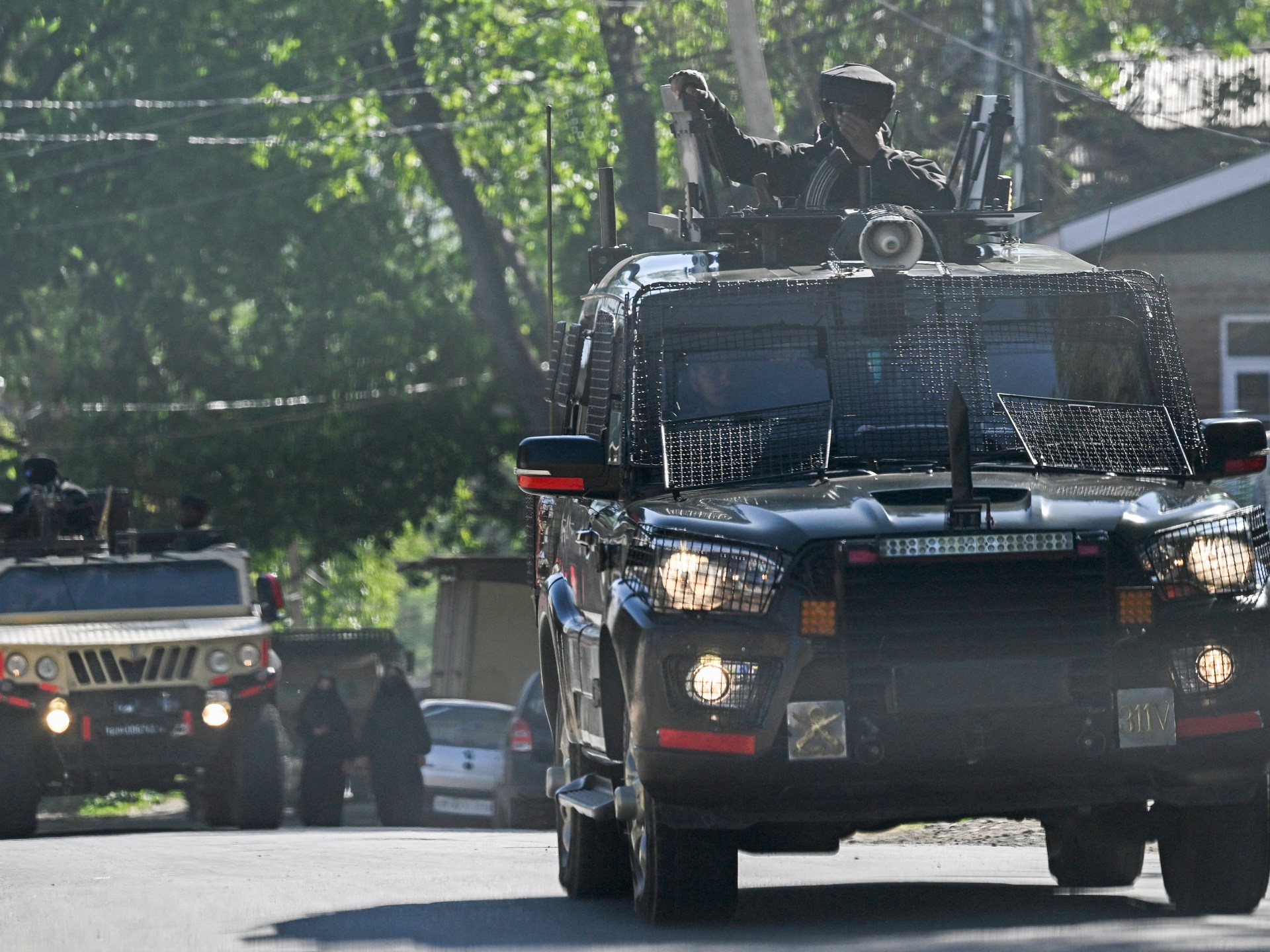
Islamabad says will ‘decisively respond’ to any military action as tensions with New Delhi soar after Kashmir attack.
Pakistan’s minister for information and broadcasting says Islamabad has “credible intelligence” that India intends to launch a military strike within the next 24 to 36 hours, as tensions between the two countries escalate following a deadly attack in Indian-administered Kashmir.
In a social media post early on Wednesday, Attaullah Tarar accused India of using last week’s attack in Pahalgam, which killed 26 tourists, “as a false pretext” to potentially strike Pakistan.
The minister did not provide any concrete information to back up his claim, and the Indian government did not immediately comment publicly on the allegations.
“Any act of aggression will be met with a decisive response. India will be fully responsible for any serious consequences in the region,” Tarar said in the post on X.
Pakistani Minister of Defence Khawaja Muhammad Asif also told the Reuters news agency on Monday that a military incursion by India was “imminent”.
Islamabad is on high alert but will only use its nuclear weapons if “there is a direct threat to our existence”, Asif said.
India’s Ministry of External Affairs did not immediately respond to a request for comment from the Reuters news agency on the latest remarks from Tarar.
Tensions between the two countries have been rising after India said there were Pakistani elements linked to the attack on April 22 in the mountain resort of Pahalgam.
It was the deadliest attack on tourists in Indian-administered Kashmir in more than two decades, and Indian Prime Minister Narendra Modi has promised to pursue the attackers.
A statement issued in the name of The Resistance Front (TRF), which is believed to be an offshoot of the Pakistani-based Lashkar-e-Taiba, claimed responsibility for the attack.
But Islamabad has denied any role in what happened and called for a neutral investigation.
After the attack, the neighbours unleashed a raft of diplomatic measures against each other, including visa revocations and the closure of Pakistani airspace to Indian airlines.
India also suspended its participation in the Indus Waters Treaty, which regulates water-sharing from the Indus River and its tributaries between the two countries.
The move spurred protests in Pakistan, and the Pakistani government has said it is preparing legal action over New Delhi’s decision.
Fire also has been exchanged along the Line of Control (LoC), the 740km (460-mile) de-facto border separating Indian- and Pakistani-controlled areas of Kashmir, prompting international calls to de-escalate tensions.
On Tuesday, the United States urged the two countries to work towards a “responsible solution”.
“We are reaching out to both parties, and telling … them to not escalate the situation,” a Department of State spokesperson told reporters, quoting a statement by Secretary of State Marco Rubio.
The spokesperson added that Rubio would speak to the foreign ministers of India and Pakistan on Tuesday or Wednesday and encouraged other foreign ministers to do the same.
The United Nations also said Secretary-General Antonio Guterres spoke with Pakistani Prime Minister Shehbaz Sharif and Indian Minister of External Affairs Subrahmanyam Jaishankar and “underscored the need to avoid a confrontation that could result in tragic consequences”.
Conflict Zones
‘Tearing down’: What drives Trump’s foreign policy? | Donald Trump News
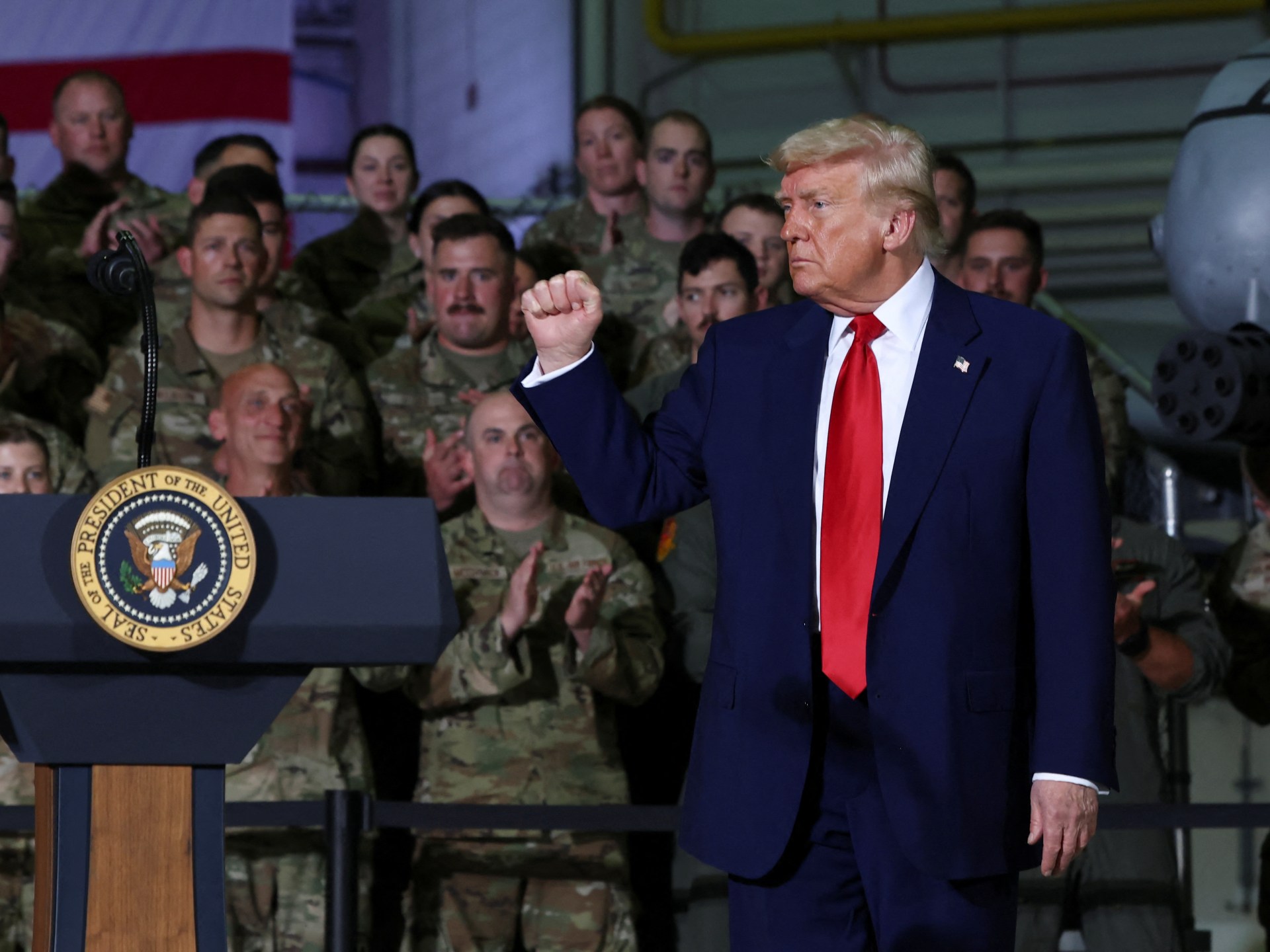
Washington, DC – Donald Trump’s world view can be difficult to pin down.
During the first 100 days of his second term, the United States president started a global trade war, targeting allies and foes alike. He also issued decrees to withdraw the US from the Paris Agreement on climate and the World Health Organization, amongst other international forums.
Trump continued to double down on a series of unconventional foreign policy proposals: taking over the Panama Canal, annexing Greenland, making Canada the 51st US state and “owning” Gaza.
And despite promising to be a “peace” president, Trump has said he intends to take the US annual Pentagon budget to a record $1 trillion.
He has distanced himself from neo-conservative foreign policy and does not position himself as a promoter of human rights or democracy abroad. His “America First” stance and scepticism of NATO align with realist principles, but his impulsiveness and highly personalised diplomacy diverge from traditional realism.
At the same time, he has not called for a full military or diplomatic retreat from global affairs, setting him apart from isolationists.
So what exactly drives Trump’s foreign policy?
Experts say it is primarily fuelled by a dissatisfaction with the current global system, which he sees as unfairly disadvantaging the US with its rules and restrictions. Instead, Trump appears to want Washington to leverage its enormous military and economic power to set the rules to assert global dominance while reducing US contributions and commitments to others.
“The Trump doctrine is ‘smash and grab’, take what you want from others and let your allies do the same,” said Josh Ruebner, a lecturer at Georgetown University’s Program on Justice and Peace.
‘Just tearing down’
Mathew Burrows, programme lead of the Strategic Foresight Hub at the Stimson Center think tank, said Trump wants US primacy without paying the costs that come with that.
“He’s withdrawing the US from the rest of the world, particularly economically,” Burrows, a veteran of the US Department of State and CIA, told Al Jazeera.
“But at the same time, he somehow believes that the US … will be able to tell other countries to stop fighting, to do whatever the US wants,” he said. “Hegemony just doesn’t work that way.”
Trump appears to believe that threatening and imposing tariffs – and occasionally violence – is a way of employing US leverage to get world leaders to acquiesce to his demands.
But critics say the US president discounts the power of nationalism in other countries, which prompts them to eventually fight back. Such was the case for Canada.
After Trump imposed tariffs and called for Canada to become the 51st state, this led to a wave of nationalist pride in the northern neighbour and an abrupt shift from the Conservative Party to the Liberal Party.
From Canada to China, foreign governments have accused Trump of “bullying” and blackmail.
Some of Trump’s Democratic rivals have rushed to accuse him of abandoning the US global role, but at the same time, the US president has been projecting American strength to pressure other countries.
While not entirely isolationist, his approach marks a significant turn from that of his predecessor.
The late Secretary of State Madeleine Albright famously said in 1998: “We are the indispensable nation. We stand tall and we see further than other countries into the future.”
That purported power and wisdom, as Albright envisioned, put the US in a position to implement Pax Americana – the concept of a peaceful global order led by Washington.
Trump does see the US as proverbially taller than other nations, but perhaps not in the way Albright meant.
“America does not need other countries as much as other countries need us,” White House spokeswoman Karoline Leavitt told reporters earlier this month.
Her statement, however, was to stress that other nations must negotiate with the US to avoid Trump’s tariffs.
In this context, Trump is seeking revenues and jobs – not an international system governed by liberal values in the way that Washington defines them.
However, Burrows said the chief aim of Trump’s foreign policy is to dismantle the existing global order.
“A big part of his world view is really his negative feelings towards the current order, where others appear to be rising,” Burrows said. “And so, a lot of this is just tearing down.”
The global order
Much of the system that manages relations between different countries was put in place after World War II, with the US leading the way.
The United Nations and its agencies, the articles of international law, various treaties on the environment, nuclear proliferation and trade, and formal alliances have governed global affairs for decades.
Critics of Washington point out that the US violated and opted out of the system where it saw fit.
For example, the US never joined the Rome Statute that established the International Criminal Court in 1998. It invaded Iraq in 2003 without United Nations Security Council authorisation in an apparent breach of the UN Charter. And it has been providing unconditional support to Israel despite the US ally’s well-documented abuses against Palestinians.
“The United States has done a lot to stand up sort of multilateral institutions – the UN and others – that are based around these ideas,” said Matthew Duss, the executive vice president at the Center for International Policy.
“But the United States has always found ways to violate that violate these norms and laws when it when it serves our purposes,” he added, pointing to former US President Joe Biden’s support for Israel’s war on Gaza and President George W Bush’s policies after the 9/11 attacks, which included extraordinary rendition, torture, invasion and prolonged occupation.
But for Trump and his administration, there are indications that the global order is not just to be worked around; it needs to go.
“The post-war global order is not just obsolete, it is now a weapon being used against us,” Trump’s Secretary of State Marco Rubio told senators during his confirmation hearing in January.

Politics of grievance
Trump recently told Time Magazine that the US has been “ripped off” by “almost every country in the world”.
His rhetoric on foreign policy appears to echo his statements about promising to look after “America’s forgotten men and women” who have been mistreated by the “elites” domestically.
While the modern world order has empowered US companies and left the country with immense wealth and military and diplomatic might, Americans do have major issues to complain about.
Globalisation saw the outsourcing of US jobs to countries with less expensive labour. Past interventionist policies – particularly the wars in Iraq and Afghanistan – are largely seen as strategic blunders that produced a generation of veterans with physical and mental injuries.
Geoffrey Kabaservice, vice president of political studies at the Niskanen Center, a centre-right think tank in Washington, DC, noted that wages have stagnated for many Americans for decades.
“The fact is that the benefits of globalisation were very maldistributed, and some people up at the top made enormous plutocratic sums of money, and very little of that flowed down to the mass of the working class,” Kabaservice told Al Jazeera.
For people who saw their factories closed and felt like they were living in “left-behind areas”, electing Trump was “retribution” against the system, Kabaservice said, adding that Trump’s “America First” approach has pitted the US against the rest of the world.
“America is turning its back on the world,” Kabaservice said. “Trump believes that America can be self-sufficient in all things, but already the falsity of this doctrine is proving true.”
Trita Parsi, executive vice president of the Quincy Institute, a think tank that promotes diplomacy, said Trump’s foreign policy, including his approach to allies, comes from “the politics of grievance”.
“He does believe that the United States – because of its role as world policeman, which he’s not necessarily in love with – has been shouldering a lot of the security burden of the world without getting proper compensation,” Parsi told Al Jazeera.
The US president has been calling on NATO allies to increase their defence spending, while suggesting that Washington should be paid more for stationing troops in allied countries like Germany and South Korea.
Nostalgia
So how does Trump view the world?
“He’s an aggressive unilateralist, and in many ways, he’s just an old-school imperialist,” Duss said of Trump. “He wants to expand American territory. He wants to extract wealth from other parts of the world … This is a kind of foreign policy approach from an earlier era.”
He noted that Trump’s foreign policy is to act aggressively and unilaterally to achieve what he sees as US interests.
Kabaservice said Trump wants the US to return to an age when it was a manufacturing powerhouse and not too involved in the affairs of the world.
“He likes the idea that maybe the United States is a great power, sort of in a 19th-century model, and it lets the other great powers have their own sphere of influence,” he said.
Kabaservice added that Trump wants the US to have “its own sphere of influence” and to be “expanding in the way that optimistic forward-moving powers are”.
This notion of an America with its own “sphere of influence” appeared to be supported by Rubio when he spoke earlier this year of the inevitability of “multipolar world, multi-great powers in different parts of the planet”.
Parsi said that Trump is seeking hemispheric hegemony above all, despite his aversion for regime change – hence his emphasis on acquiring Greenland and the Panama Canal.
“You’re shifting not from the politics of domination towards restraint; you’re shifting from the politics of global domination to a more limited form of domination,” Parsi told Al Jazeera.
“Focus only on your own hemisphere.”
The US may have already experienced what happens when these views of nostalgia and grievance see real-world implications. Trump’s erratic trade policy rocked the US stock market and sparked threats of counter-levies from Canada to the European Union to China.
Eventually, Trump postponed many of his tariffs, keeping a baseline of 10 percent levies and additional importing fees on Chinese goods. Asked why he suspended the measures, the US president acknowledged that it was due to how the tariffs were received. “People were jumping a little bit out of line. They were getting yippy,” he said.
Ultimately, Trump’s unilateralism and unpredictability have “broken the world’s trust in significant ways” that will outlast his presidency, Kabaservice told Al Jazeera.
“In the broad span of history, Trump will be seen as the person who committed terrible unforced errors that led to the end of the American century and the beginning of the Chinese century,” he said.
During his inauguration speech earlier this year, the US president said his legacy “will be that of a peacemaker and unifier”.
“His actual legacy will be that he has torn down the global system that the US created,” said Burrows, of the Stimson Center.
-

 Education2 days ago
Education2 days agoStudents and faculty demand Columbia University stand up to federal government
-

 Conflict Zones2 days ago
Conflict Zones2 days agoISIL group kills five Kurdish fighters in attack in eastern Syria | ISIL/ISIS News
-

 Europe2 days ago
Europe2 days agoAlexandra Fröhlich: Police launch murder investigation after bestselling novelist found dead on houseboat
-
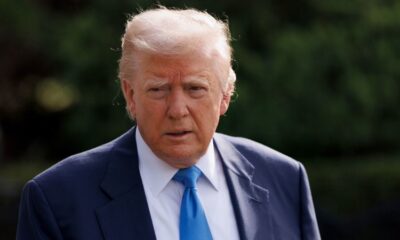
 Europe2 days ago
Europe2 days agoLive updates: Trump news on Ukraine peace talks and immigration as he nears 100 days in office
-

 Sports2 days ago
Sports2 days agoVaibhav Suryavanshi: History-making 14-year-old cricket player wows crowd with century score
-
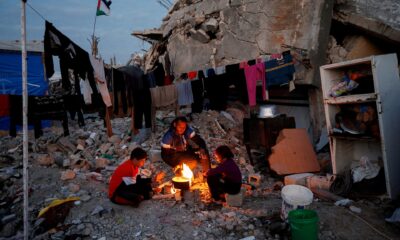
 Middle East23 hours ago
Middle East23 hours agoI was forced to burn my books to survive in Gaza | Israel-Palestine conflict
-

 Middle East2 days ago
Middle East2 days agoIsrael’s Shin Bet chief ousted by Netanyahu says will stand down on June 15 | News
-

 Conflict Zones2 days ago
Conflict Zones2 days agoHezbollah leader says Lebanese gov’t must do more to end Israeli attacks | Hezbollah News




